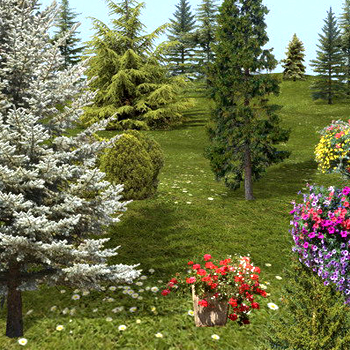 Plant Kingdom
A plant is a living organism. It is made up of different parts, each of which has a particular purpose, or specialized funtion.
Plant Kingdom
A plant is a living organism. It is made up of different parts, each of which has a particular purpose, or specialized funtion.
Looking at a lush landscape, such as the forest scene in figure, it is difficult to imagine the terrestrial environment without any plants or other organisms. Yet for more than 3 billion years of Earth’s history, the land surface was largely lifeless.
Geochemical evidence suggests that thin coatings of cyanobacteria existed on land about 1.2 billion years ago. But it was only within the last 500 million years that small plants as well as fungi and animals joined them ashore. Finally, by about 385 million years ago, some plants appeared that could grow much taller, leading to the formation of the first forests.
Since colonizing land, plants have diversified widely; today, there are more than 290,000 known plant species. Plants inhabit all but the harshest environments, such as some mountaintops, a few desert areas, and the polar regions. A few plant species, such as seagrasses, returned to aquatic habitats during their evolution, but most present-day plants live in terrestrial environments.
In this chapter, we’ll refer to all plants as land plants, even those that are now aquatic, to distinguish them from algae, which are photosynthetic protists. The presence of land plants has enabled other life-forms– including animals to survive on land. Plants supply oxygen and ultimately most of the food eaten by terrestrial animals.
Also, plant roots create habitats for other organisms by stabilizing the soil in sand dunes and many other environments. This chapter traces the first 100 million years of plant evolution, including the emergence of seedless plants such as mosses and ferns and also examines the later evolution of seed plants.